Infinite Peace!
A touching session was held last Tuesday (July 3) at the Inner Work Circle as we touched on the theme of “The Sense of Touch.”
As we continued with the main theme of exploring the self, starting with the sight and hearing, we found yet another interesting sub-theme on the physical senses which we often take for granted and we rarely reflect on. The discussions shared last night revealed that the touch is a subject matter that is a rich source of insights. Here are some of the keywords and concepts brought up.
Touch can be positive or negative. It can be “supportive” and healing – as in massage, reflexology, physical therapy or touch therapy. Need we be reminded of the scientific study of how babies who were caressed/held by volunteers for a certain period daily were found healthier and able to resist disease more than those who left untouched?
On the other hand, touch can turn out to be negative once it is accompanied by hostile and malicious intent – as with the case of sexual harassment and abuse, or worse, physical violence.
Another concept related to touch is sensitivity (and it’s opposite, numbness). When we say a person is sensitive s/he is can easily sense either pleasant or unpleasant sensations from each touch. His/her skin may also be easily irritated.
The term “sensitive” also refers to a person who can easily feel the emotions of others or one who can easily be emotionally affected. This leads to an insight on two different levels of sensitivity and touch, that is—the physical and non-physical.
It is no wonder that the word sensitivity—which is rooted from the word “sense”—is closely associated with touch, because touch would seem to be the ultimate sensory tool in experiencing the physical world. As mentioned in the sharing, children naturally would always try to hold or touch each novel object they see. It is as if it is not enough to see or hear it-- they need to touch it to fully experience and understand it. Sometimes we need to touch something to confirm it the object is real even if we see it with our own eyes. One Christian brother reminded us of Thomas, the disciple of Christ, whose case was: “To touch is to believe”.
On the other hand, we often hear the expression “I am touched!”—which refers not to any physical contact, but to a non-physical one. This is related to the idiom: “touching one’s heart”—which leads us back to how the term “touch” relates with emotions. We “feel” sensations through our skin, as well as “feel” emotions through our hearts. Isn’t it any wonder that the touch is the ultimate expression of love?
One participant shared how she feels the love of her parents most from their touch rather than from their words or visual cues. It is when their hands and arms come in contact with, caress, pat, or embrace her body that she feels the love most.
It is no wonder also that in Chinese traditional medicine, the palm is considered an extension of the heart—as energy meridian/pathways flow from the organ out to the center of the palm (hence, our “healing hands” which instinctively reach out to the affected part of the body). It is also a healing instinct to reach out our hands and arms to anyone who got hurt, whether physically or emotionally.
The highlight of the evening was a “hands-on” activity shared by one of the participants who led us to some simple team-building exercises that demonstrated the harmonizing power of touch.
Next Tuesday (July 17) we will be taking up a suggested theme, “Terms of Oneness: ‘Ourself’ (vs. ‘Ourselves’) and “the Other’ (vs. ‘Kapwa’). This will be facilitated by Mr. Ding Reyes.
See you then!
Shanti!
O.
skip to main |
skip to sidebar


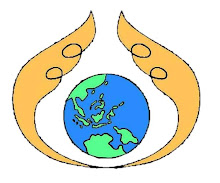

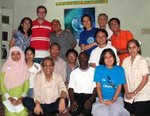
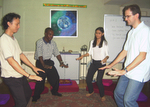
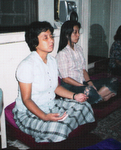
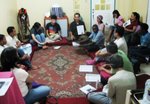
updates/reflections/reports on The Peacemakers' Circle INNER WORK - Self Awareness Program

Go to

About the Tuesday Inner Work Circle
The Peacemakers' TIWC is a support group/sharing circle where ordinary people from different faith backgrounds share with one another insights, reflections, personal experiences and life challenges within the backdrop of their respective spiritual traditions as they strive to become true instruments of peace by practicing heart-listening and cultivating self-awareness and individual transformation.
About Me

- The Peacemakers' Circle Foundation, Inc. (TPCFI)
- The Peacemakers' Circle is a non-stock, not-for-profit, and non-partisan organization composed of people of diverse religions, spiritual expressions, and indigenous traditions who recognize the Oneness of Humanity and are guided by the Principles of Unity in Diversity, Good Will, and Cooperation. Thinking globally and acting locally, we strive to bring forth the highest ideals and teachings of our faith as we work together to promote spiritual self-awareness and “be the change that we wish to see in the world!”

Blog Archive
The TIWC Gang 2006

JOIN US
EVERY TUESDAY 6:00-8:00PM at The Peacemakers’ Circle (Unit 105 PhilDHRRA Partnership Center, 59 Salvador St., Varsity Hills, Loyola Heights, QC. – 2 blocks from McDonald’s/Shakey’s parallel Katipunan Ave. across Ateneo gate 2). Let us know if your dropping by – tel. 920-7622 or 0918-7822805 (OrlanD) ; peacemakerscircle_uri@yahoo.com


TIWC 2007

Visit the URI blogsite
Know more about the UNITED RELIGIONS INITIATIVE --
www.uriseapacific.org
www.uriseapacific.blogspot.com
www.uriseapacific.org
www.uriseapacific.blogspot.com